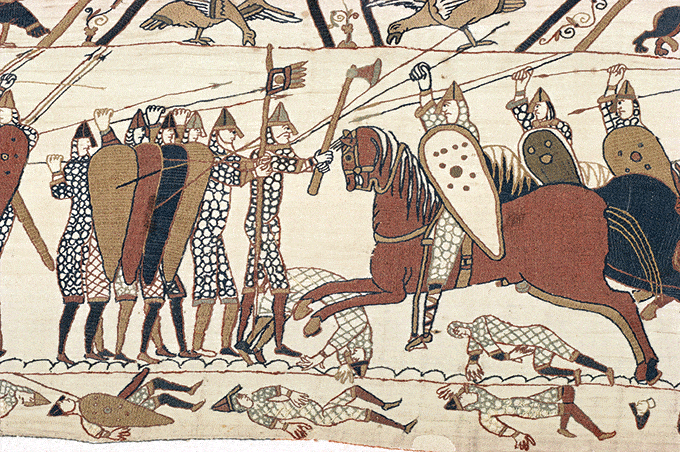
The Battle of the Catalaunian Fields Set the Stage for the Creation of France
Attila the Hun (reigned 434 – 453) ruled a multi-tribal empire that stretched from the Russian Steppe into Central Europe. He terrorized the civilized world, and earned the moniker “The Scourge of God”. He invaded Persia and both the Eastern and Western Roman Empires, devastated the Balkans, and extorted huge sums from the Romans – literally tons of gold – to let them be.
He always came back for more, however. In 450, the Western Roman Emperor’s sister sought Attila’s help to get her out of an unwanted betrothal. Attila interpreted that as a marriage proposal, accepted, and asked for half of the Western Roman Empire as dowry. The Romans refused, so Attila invaded and began plundering Gaul, and a Roman general named Aetius was tasked with organizing the resistance.
Aetius formed an alliance with the barbarian Visigoths, promising them a homeland of their own in southwestern France in exchange for their military aid. An allied Roman-Visigoth army of about 50,000-80,000 men set out to confront Attila, who led an army of similar size. They reached him as he was besieging Aurelianum – today’s Orleans, France. Attila broke off the siege and retreated to find a favorable ground to give battle. He found it at the Catalaunian Fields northeast of Orleans, and there, he turned to face his foes. On June 20th, 451, Attila’s army met the allied army under the command of Aetius and the Visigothic king Theodoric I, at the Battle of the Catalaunian Fields.
The field was dominated by a ridge, whose right side the Huns seized, while the Romano-Visigoths seized the left. The ridge’s crest in the center was unoccupied, and it became the focus of the upcoming battle. Fighting began with the Huns advancing to seize the crest, but Aetius’ men got there first. The Romans repulsed the Huns, who reeled back in disarray, and Theodoric’s Visigoths attacked them as they retreated. Attila plunged into the fight to reorganize his men, but was forced to retreat back to his fortified camp. The Visigoth king Theodoric was killed during this fighting, and his son Thorismund took his place.
Fighting ceased at nightfall. The following day, Attila awaited an attack, but it never came. Aetius, realizing that Attila had already been defeated, contemplated the political ramifications should he be destroyed utterly: with the Hun threat removed, the Visigoths would have no more need of the Romans, and would likely turn on them. So despite Visigoth urging to resume the battle, Aetius refused. Instead, he convinced Thorismund to return to the Visigoth capital and secure the throne, before one of his brothers seized it.
Attila survived, but the battle had reshaped Gaul, and set it on a new trajectory that would transform it into France. The Romano-Gauls, a blend of the Celtic Gauls and the Latin Romans, were replaced as a ruling class by new Germanic overlords. The Goths would form an independent kingdom in southwestern Gaul, while in northern Gaul, Roman influence was weakened, while that of the Franks and Burgundians increased. France would eventually emerge from that new blend.

